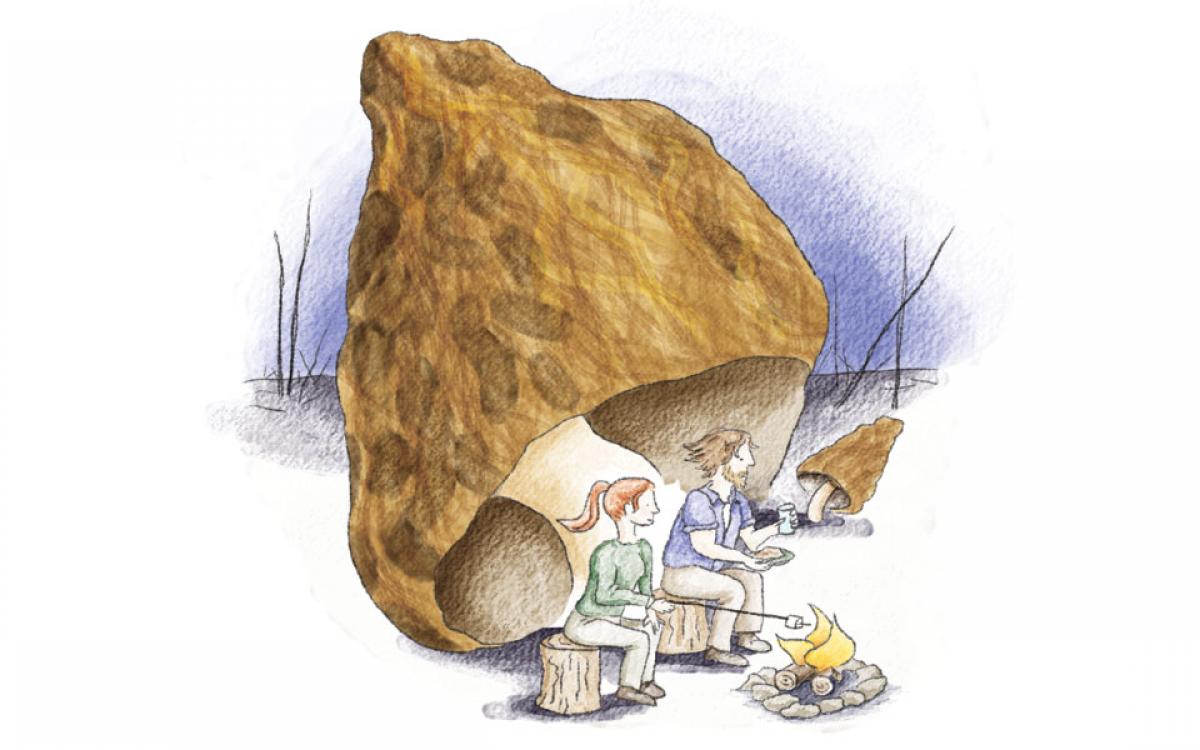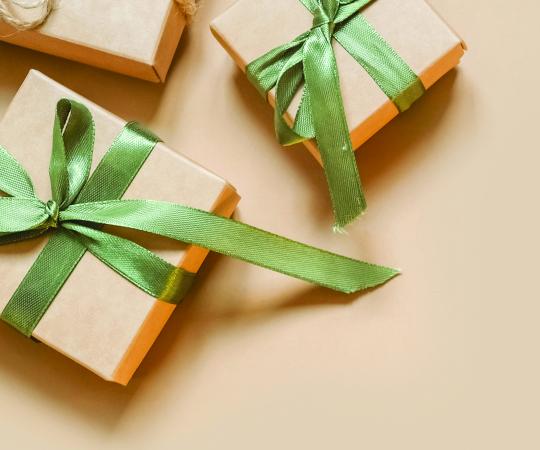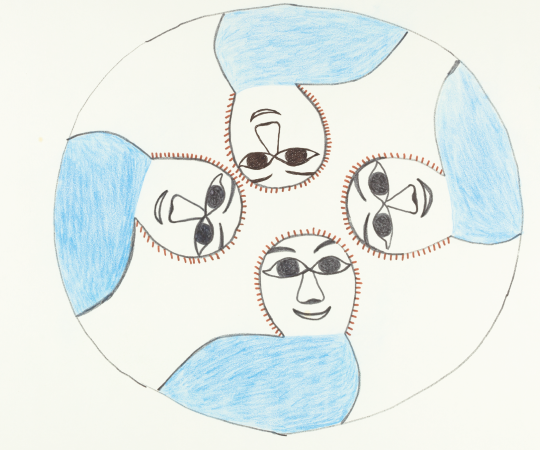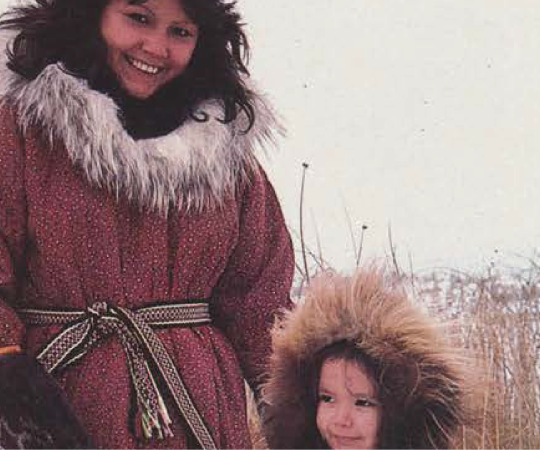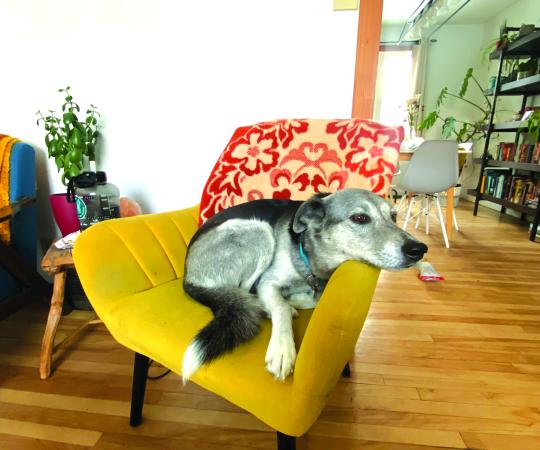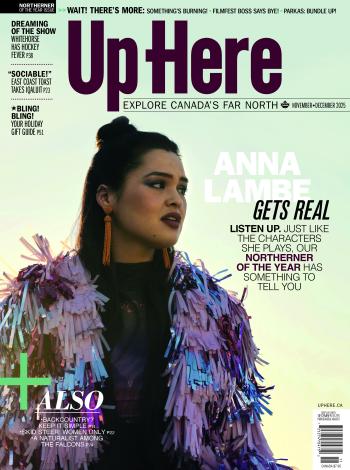The man is alone on the ATV—yelling. He’s an older fellow in a yellow rain jacket shouting over the thrum of the engine. Behind him, strapped to the quad are plastic crates jammed full of fresh morels.
We’d been warned about the Barney Lake burn.
Eating breakfast at a Watson Lake diner, an hour north, the cook mentioned bootleggers and rumours of a meth lab that had popped up amongst the charred trees, catering to the more than 800 pickers populating the burn. “Steer clear of that circus,” he says.
A few hours later, we are in the middle of it—a blackened swath of forest stretching 65,000 hectares off a remote strip of Alaska Highway near the Yukon/B.C. border. A cluster of trailers beside the highway marks the main access point—a dirt track, cut a year ago by fire crews fighting the blaze. A toddler runs around a garden plot sprouting fledgling lettuce, next to a beat-up aluminum boat. When we pull up, her dad pokes his head out the trailer door.
Pickers aren’t generous with tricks of the trade, but this ex-roughneck from Alberta, harvesting morels for quick cash after oil prices crashed, says the biggest mushrooms were out near the lake. Head up the dirt road and take the first main right, he says. If we get to Joe Bear’s operation, and burger shack, we’ve gone too far.
The camps start almost immediately, tents and tarps stretched across cleared pockets of bush with signs reading, “No stealing,” and “Trespassers will be shot.” Speed bumps are dug into the road, slowing the steady stream of squeaky vehicles. “Beer” is spray-painted across the side of a truck with a flat tire—six-packs for $20.
It’s rough going. A couple of guys in the pick-up behind us call it quits at a pothole that swallows the front end. “Watch for grizzlies,” they say. Then they point up the hill. “There are lots of morels up in those poplar.”
The road ends at a makeshift pallet bridge only wide enough for ATVs. Carrying buckets with holes drilled in them, to keep fresh the morels we hope to find, we scramble over a tangle of charred trees and roots toward the poplar. Tiny spring flowers are popping up from the sooty ground, and there are new shoots on the stumps, but after an hour, still no morels.
Back at the bridge, we run into a couple of naked Czechs bathing in the creek. They’re moving camp, digging deeper pits for their food after a grizzly ransacked their last site. It ate all of their chocolate and Miracle Whip. The Czechs aren’t picking in the poplar, it’s not a good patch. They are planning to drive five hours to Whitehorse, buy a boat and head across the lake.
Bug-Eyed Bob, a mushroom buyer who’s set up shop at the end of the road, points out a quad trail, barely wide enough for the truck, heading toward the lake. The morels begin at the trail, thumb-sized mushrooms with ridges like crocheted lace. Our buckets are half full and we’re almost at the lake when we stop to camp that first night.
There is no one in sight. Our tarp is stretched between burnt trees, tents are pitched in soot and fresh morels are sizzling over the fire, when we hear voices. Walking back from the lake, packing towering crates of mushrooms are more Czechs. They laugh at the morels in our frying pan and keep walking, heading to their camp for instant noodles, or one of Joe Bear’s burgers.
It is almost dark when the yelling starts. As the man on the ATV gets closer, his yellow rain jacket flashing through the charred trees, the swearing grows more audible. Passing our camp, he keeps staring straight ahead, shouting a steady stream of obscenities and something about “being camped in a patch.”
We didn’t know it then, but this wasn’t a very good patch either. The next day, at the lake, we find morels as big as fists, filling bucket after bucket. We also find garbage, bear sign, and a lot of cut stems.
We don’t sell to buyers, like Joe Bear who pays $7 a pound and has generators curing mushrooms around the clock. Bear has choppers and jet boats too, pushing crews into more remote parts of the burn, clearing 2,300 pounds a day.
We pick for ourselves, drying the mushrooms under clear plastic tarps, building tiny fires to smoke them when it starts to rain. We feast on fresh morels, learn to differentiate varieties, the blondes, greys and browns, and try to steer clear of the circus.
The dried Barney Lake morels now sit in big glass jars in my pantry, smoky ones from the day it rained, fist-sized monsters from the lake and a handful of tiny ones, from that first night, when we unknowingly camped in a patch.

